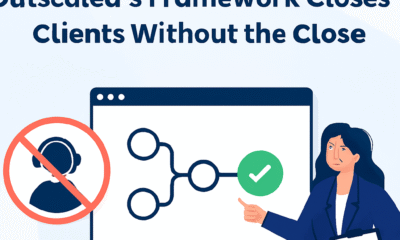General
Assessing Voter Rights In The Collection And Use Of Personal Data Within Political Campaigns:

Introduction:
In today’s increasingly digitized world, personal data is one of the most valuable assets, influencing everything from marketing strategies to political campaigns. The collection, sharing, and use of this data in democratic processes raises significant ethical, privacy, and security concerns. As political campaigns become more data-driven, the question arises: should voters have control over how their data is collected, shared, and used? This blog explores the implications of personal data use in politics, the role of voters in protecting their privacy, and the potential consequences of a data-driven political landscape.The Growing Role of Data in Political Campaigns:
The integration of personal data into political campaigns has transformed how candidates connect with voters. Gone are the days of broad-based television ads and town hall meetings. Today, campaigns can tailor their messages to specific demographics by analyzing vast amounts of personal data. From social media activity to browsing history, personal data allows political strategists to craft highly personalized content designed to sway voter opinions and influence electoral outcomes.Privacy Concerns:
“At the core of the debate over voter data is the question of privacy. Who owns the data collected from voters? In most cases, political campaigns and third-party organizations gather this data with minimal oversight, raising concerns about how this information is stored, used, and shared. Unlike traditional forms of data collection, which typically involve explicit consent from individuals, the collection of voter data often occurs behind the scenes, leaving voters unaware of the extent to which their personal information is being utilized”. Says Mike Smithson, Editor, PoliticalBettingThe Ethical Implications of Data-Driven Politics:
The ethical implications of using personal data in political campaigns are far-reaching. One of the key concerns is the potential for manipulation. With access to detailed information about voters’ preferences, fears, and desires, political campaigns can craft messages that play on emotions and biases. This creates a risk of misleading voters or even spreading disinformation designed to sway their votes.Voter Control and Consent:
“The idea of voter control over personal data is a complicated one. On one hand, voters should have a say in how their personal information is used, particularly when it comes to political campaigns. On the other hand, some argue that giving voters complete control could hinder political campaigns’ ability to effectively reach their audience. There is a delicate balance between transparency, consent, and the practical needs of political campaigning. One solution may lie in a framework that allows voters to opt in or out of data collection. Giving voters the ability to choose whether their data is used in political campaigns could empower them to make informed decisions about their privacy. However, this raises further questions about how such a system would be implemented and monitored to ensure fairness and compliance”. Says Jon Sutton, Partner, Sutton & Smart Political ConsultingThe Role of Legislation in Protecting Voter Privacy:
“As the use of personal data in political campaigns continues to grow, so too does the need for robust legislation to protect voter privacy. In many countries, existing laws surrounding data protection, such as the General Data Protection Regulation (GDPR) in the European Union, are evolving to address the increasing concerns around data use in politics. These laws are designed to give individuals more control over their data and ensure that organizations are transparent about how data is collected and used. However, political campaigns often operate in a legal gray area. While data protection laws may apply to private corporations, political organizations may not always be subject to the same regulations. This creates a potential loophole that allows political campaigns to collect and use personal data with less scrutiny than commercial entities. Strengthening the regulatory framework around political data collection and usage is essential to ensure that voter privacy is protected”. Says James Baxter, CEO of iPoliticsTransparency and Accountability in Data Usage:
“Transparency and accountability are critical when it comes to the use of personal data in political campaigns. Voters must be informed about how their data is being used and who is collecting it. Political campaigns should be required to disclose the data sources they rely on, the methods they use to collect information, and the specific ways in which data is employed to target voters. Campaigns should also be held accountable for how they use data. This includes ensuring that data is not used to manipulate or deceive voters. Independent oversight bodies may be necessary to monitor how political campaigns are using data and enforce transparency standards. This could help build public trust in the political process and ensure that data-driven campaigns operate ethically”. Says Jeff Jarvis, Director, BuzzMachineThe Future of Voter Data Ownership:
“The future of voter data ownership will likely be shaped by advancements in technology, changes in public attitudes toward privacy, and the development of new legislation. As data collection and usage become more sophisticated, it is likely that voters will demand more control over how their personal information is shared and used. One potential future scenario is the creation of a decentralized system that allows individuals to own and control their data. In such a system, voters could decide who has access to their data and for what purpose. This would allow individuals to exercise greater control over their privacy while still allowing political campaigns to engage with voters in meaningful ways”. Says Peter Edwards, Founder, LabourListConclusion:
The question of whether voters should have control over how their data is collected, shared, and used in political campaigns is an important one. As political campaigns increasingly rely on data to influence voter behavior, it is essential to strike a balance between privacy, transparency, and the need for effective political communication. Voters must be empowered to make informed choices about their data, and political campaigns must be held accountable for how they use personal information. By establishing clear regulations, promoting transparency, and giving voters control over their data, we can ensure that the democratic process remains fair, ethical, and inclusive for all.General
Keeping It Simple: Why Uncontested Divorce Feels Like a Breath of Autumn Air

The Beauty of Simplicity
There’s something undeniably soothing about a crisp autumn morning; the way the cool air clears your mind, the rustle of leaves underfoot, and the golden light that seems to slow the world down. Divorce, on the other hand, is rarely associated with peace or simplicity. What if it could be?
An uncontested divorce offers that kind of simplicity. It’s the difference between stepping into a chaotic storm and walking through a quiet, leaf-strewn path. By working together, couples can avoid the heavy emotional and financial toll of courtroom battles, instead focusing on creating a clear, calm path forward.
This isn’t about minimizing the significance of divorce; it’s about finding a process that feels lighter, clearer, and less draining. Just like that deep breath of autumn air, an uncontested divorce can bring a refreshing sense of calm during an otherwise overwhelming time.
Why We Crave Simplicity in Life Transitions
Life is complicated enough. Between careers, parenting, bills, and daily responsibilities, the last thing anyone needs is another layer of chaos. Divorce, especially, can feel like being buried under a pile of raked leaves—just when you think you’ve cleared one area, another gust of wind scatters everything again.
When couples choose uncontested divorce, they’re saying, “We don’t want this to be harder than it has to be.” It’s about choosing peace over conflict, efficiency over delay, and clarity over confusion.
Simplicity doesn’t mean the process is emotionless or trivial. It means you’re prioritizing your emotional well-being by avoiding unnecessary complications. When the path is clear, you have the space to focus on healing, co-parenting, or simply rediscovering who you are.
Uncontested Divorce: A Clear Path Through the Leaves
One of the most appealing aspects of an uncontested divorce is that it eliminates many of the roadblocks that cause stress in traditional cases. There are no drawn-out arguments in court, no endless back-and-forth over every detail, and no long list of hearings that leave you feeling stuck.
Think of it like walking through a park in late October. The path might have leaves scattered across it, but you can still see the way forward. You’re not climbing over fallen trees or trudging through mud. You’re simply following a gentler, straightforward route that leads you where you need to go.
This is especially true when both parties are willing to be honest, transparent, and focused on solutions. Instead of letting lawyers or judges decide every detail, you and your spouse stay in control of the outcome. That sense of control is empowering and can make the entire transition feel less daunting.
The Benefits of Keeping Things Simple
- Emotional Relief
By avoiding conflict, you save yourself from unnecessary emotional strain. An uncontested divorce is often quieter and less charged with anger or resentment. It’s not about being best friends. It’s about recognizing that fighting doesn’t serve anyone. - Financial Savings
The cost of a contested divorce can skyrocket due to court appearances, attorney fees, and extended timelines. An uncontested divorce is much less expensive, freeing up resources for starting over, like saving for a new home or taking a much-needed break. - Faster Resolution
Court battles can stretch out for months, even years. An uncontested divorce can often be finalized in weeks. That’s time you can reclaim to focus on rebuilding your life. - A Positive Foundation for Co-Parenting
If children are involved, keeping things simple helps minimize the stress they feel. When kids see their parents cooperating rather than arguing, it reassures them that family, though changed, still means stability and love.
How to Embrace a Simpler Process
Start with honest conversations. Much like cleaning out a closet before the season changes, it’s easier to move forward when everything is out in the open. Discuss property, custody, and financial decisions openly and calmly.
Seek guidance where needed. Just because the process is simple doesn’t mean you need to handle it alone. An attorney, like one of our attorneys at the Harris Firm, can draft and file your paperwork, ensuring everything is done correctly without unnecessary complications. Since uncontested divorces involve mutual agreement, one attorney can manage the filing for both parties; a true time and stress saver.
Focus on the bigger picture. It’s easy to get lost in the small details, but remember, this is about building a brighter future. A peaceful process means you can invest more energy into what’s ahead rather than what’s ending.
Taking a Deep Breath
There’s a special kind of peace that comes from standing outside on a crisp fall morning, taking a deep breath, and feeling the weight lift off your shoulders. That’s what uncontested divorce can bring to your life—a sense of clarity and calm amid change.
It’s not about pretending everything is perfect. It’s about recognizing that the path you choose can make all the difference. By keeping things simple, you’re giving yourself the gift of peace during a time that could otherwise be filled with tension and worry.
Life Beyond the Season of Change
Just as autumn transitions into winter and then into spring, life after divorce opens new doors. The process may be bittersweet, but there’s something freeing about knowing you’ve handled it with dignity and simplicity.
The Harris Firm in Alabama often sees clients leave an uncontested divorce feeling lighter, more confident, and ready for their next chapter. It’s like that satisfying exhale after finishing a tough day’s work, knowing tomorrow holds the promise of something new. At the end of the day, uncontested divorce isn’t about avoiding the reality of separation. It’s about choosing a healthier way to move forward. It’s about clearing the fallen leaves, taking that refreshing breath of autumn air, and stepping into the next season with courage and calm.
General
Cheap Birthday Cakes That Don’t Skimp on Celebration

Introduction
Birthdays deserve cake that’s non-negotiable. But when you’re watching your wallet, the price tags at fancy bakeries can make your celebration budget disappear faster than candles on a cheap birthday cake. The good news? You don’t need to spend a fortune to create a memorable birthday centerpiece.
Whether you’re planning a child’s party, celebrating a milestone, or organizing an office gathering, there are countless ways to serve up something sweet without breaking the bank. From whipping up your own masterpiece in the kitchen to finding hidden gems at budget-friendly stores, affordable birthday cakes are absolutely within reach.
This guide will walk you through practical strategies for getting the most cake for your money, ensuring every birthday feels special regardless of your budget.
DIY Cake Ideas: Homemade Magic on a Budget
Creating your own birthday cake is often the most economical option, and it comes with the added bonus of personal touches that store-bought versions simply can’t match.
Box Mix Transformations
Don’t underestimate the power of a $1 box mix. These pantry staples can be transformed into impressive cakes with a few simple tweaks. Add an extra egg for richer texture, substitute milk for water, or mix in melted butter instead of oil. These small changes create bakery-quality results at a fraction of the cost.
For chocolate lovers, try adding a packet of instant pudding mix to your batter. This trick creates an incredibly moist cake that rivals expensive alternatives. Vanilla pudding works wonders in yellow cake, while butterscotch pudding adds depth to spice cake flavors.
Creative Decorating Solutions
Frosting doesn’t have to be elaborate to look impressive. A simple buttercream made from butter, powdered sugar, and vanilla can be dressed up with food coloring or cocoa powder. Create marble effects by swirling colors together, or use a fork to make textured patterns around the sides.
Fresh fruit makes an elegant and affordable topping. Strawberries, blueberries, or even orange slices can transform a basic cake into something that looks professionally decorated. Powdered sugar dusted over berries adds an extra touch of sophistication.
Sheet Cake Success
Sheet cakes maximize your budget by serving more people with less effort. A single 9×13 pan can easily feed 12-15 people, making the cost per serving incredibly low. These rectangular canvases also provide plenty of space for creative decorating, whether you’re writing messages, creating designs, or sectioning off different flavors of frosting.
Budget-Friendly Bakeries: Finding Quality for Less
Not everyone has time to bake from scratch, and that’s perfectly okay. Smart shopping can help you find professionally made cakes without premium prices.
Grocery Store Bakeries
Most major grocery chains offer custom cake services at competitive prices. These bakeries often provide the same decorating capabilities as specialty shops but at significantly lower costs. Many stores run weekly specials on decorated cakes, so timing your celebration around these sales can lead to substantial savings.
Call ahead to ask about day-old discounts or end-of-shift markdowns. Some bakeries reduce prices on unsold decorated cakes rather than waste them, creating opportunities for last-minute bargain hunters.
Local Bakery Alternatives
Small, independent bakeries sometimes offer more flexibility on pricing, especially for regular customers. Building relationships with local bakers can lead to discounts, especially if you’re ordering multiple cakes throughout the year for family birthdays.
Consider asking about “naked” cakes those with minimal frosting on the sides. This trendy style costs less to make and often comes with lower price tags while still looking intentionally stylish.
Wholesale Club Options
Membership stores like Costco and Sam’s Club offer impressively large cakes at unbeatable prices. A half-sheet cake from these retailers can serve 30-40 people for less than what many bakeries charge for much smaller versions. While customization options may be limited, the value proposition is hard to beat for larger gatherings.
Discount Stores: Hidden Cake Treasures
Don’t overlook unconventional sources for birthday cake solutions. These alternatives can surprise you with their quality and selection.
Frozen Cake Sections
The frozen food aisle holds some excellent cake options that many shoppers walk right past. Frozen layer cakes and cheesecakes often taste remarkably fresh when properly thawed, and they cost significantly less than fresh bakery items.
Sara Lee, Edwards, and other national brands regularly offer coupons that can make these options even more affordable. Stock up when prices drop and keep them frozen for unexpected celebrations.
Dollar Store Cake Supplies
While you might not buy the actual cake at a dollar store, these shops are goldmines for decorating supplies. Candles, cake toppers, plastic figurines, and even cake pans can all be found for $1 each. This allows you to put more money toward a quality cake base while still achieving an impressive presentation.
Warehouse Store Sheet Cakes
Beyond wholesale clubs, some warehouse-style discount stores offer sheet cakes at remarkably low prices. These no-frills options focus on quantity and value rather than elaborate decorations, making them perfect for casual celebrations or large groups.
Tips and Tricks for Maximum Savings
Smart strategies can stretch your cake budget even further while maintaining quality and presentation.
Timing Your Purchase
Shop for cakes late in the day when bakeries mark down items that won’t sell. Many grocery stores reduce bakery prices by 50% or more in the final hours before closing. While you might not get custom decorations, you can often find perfectly good cakes that just need candles.
Portion Control Strategies
Consider serving cake alongside other desserts rather than making it the sole sweet option. Cookies, ice cream, or fruit can help fill out the dessert table while allowing you to buy a smaller (and less expensive) cake. This approach often creates more variety and excitement than a single large cake.
Cake Mix Sales and Coupons
Stock up on cake mixes when they go on sale, typically during peak baking seasons like holidays. Combine store sales with manufacturer coupons for maximum savings. Many stores offer digital coupons through their apps, making it easy to save without clipping paper coupons.
Alternative Celebration Formats
Think beyond traditional round layer cakes. Cupcakes, cake pops, or even a decorated brownie can serve as birthday centerpieces while often costing less per serving. These individual treats also eliminate the need for cake cutting and serving utensils.
Making Every Birthday Special
Cheap doesn’t have to mean cheerless when it comes to birthday cakes. With a little creativity, strategic shopping, and willingness to think outside the traditional cake box, you can create memorable celebrations that honor the birthday person without emptying your wallet.
The key is focusing on what really matters gathering people together to celebrate another year of life. Whether your cake comes from a box mix, a grocery store bakery, or a creative alternative, the love and thought behind the celebration will always be the most important ingredient.
Start planning your next birthday celebration with these budget-friendly strategies in mind. Your wallet will thank you, and the birthday person will still feel completely celebrated.
Frequently Asked Questions
How much should I expect to spend on a budget birthday cake?
Homemade cakes using box mixes typically cost $3-8 total, serving 8-12 people. Grocery store sheet cakes usually range from $15-25 and can serve 20-30 people. Warehouse club cakes offer the best value for large groups, often serving 40+ people for under $20.
Can I make a cake look professional without expensive decorating tools?
Absolutely. Simple techniques like using a fork to create texture, dusting with powdered sugar, or arranging fresh fruit can create elegant presentations. Plastic bags with corners cut off work as makeshift piping bags, and everyday kitchen tools can create impressive effects.
What’s the best way to store a homemade cake to keep costs down?
Wrap unfrosted cakes in plastic wrap and store at room temperature for up to 3 days, or freeze for up to 3 months. Frosted cakes should be covered and can last 2-3 days at room temperature. Making cakes ahead when you have time can help you avoid last-minute expensive purchases.
Are there any cake flavors that cost less to make than others?
Yellow and chocolate cakes using box mixes are typically the most economical options. Avoid recipes calling for expensive ingredients like cream cheese, specialty extracts, or multiple types of nuts. Fruit-based cakes can be affordable when using seasonal produce.
How can I make a small cake serve more people?
Cut smaller slices and serve with ice cream or whipped cream to make portions feel more substantial. Offering multiple dessert options allows you to serve smaller cake pieces while still providing plenty of sweets cheap birthday cakesfor everyone.
General
Bul Koul: The Ancient Grain Dish That’s Captivating Food Lovers

Introduction
Middle Eastern cuisine has gifted the world countless treasures, but few dishes embody the region’s rich culinary heritage quite like bul koul. This ancient grain-based delicacy has sustained families for generations, weaving together tradition, nutrition, and unforgettable flavors in every bite.
Bul koul represents more than just a meal it’s a testament to the ingenuity of Middle Eastern cooks who transformed simple ingredients into something extraordinary. Whether you’re exploring traditional recipes or discovering modern interpretations, this versatile dish offers a window into centuries of culinary wisdom.
From its humble origins in rural kitchens to its growing presence on contemporary tables, bul koul continues to evolve while maintaining its authentic character. Understanding this dish means appreciating both its historical significance and its potential to enrich your own cooking repertoire.
Tracing the Origins and History of Bul Koul
The story of bul koul begins in the fertile regions of the Middle East, where ancient civilizations first cultivated the grains that would become its foundation. Archaeological evidence suggests that similar grain preparations have existed for over 3,000 years, making bul koul one of humanity’s oldest comfort foods.
Rural communities originally developed bul koul as a practical solution to food preservation and nutrition. Families would prepare large batches during harvest season, creating a shelf-stable dish that could sustain them through leaner months. The technique of combining grains with aromatic spices not only enhanced flavor but also helped preserve the food naturally.
Different regions contributed their own variations to the basic recipe. Lebanese versions often incorporated pine nuts and dried fruits, while Syrian preparations emphasized warming spices like cinnamon and allspice. These regional differences reflect the dish’s adaptability and the creativity of home cooks who made it their own.
Trade routes played a crucial role in bul koul’s evolution. As merchants traveled between cities, they carried recipes and techniques that gradually spread throughout the Levant. This cultural exchange enriched the dish, introducing new ingredients and preparation methods that continue to influence modern versions.
Traditional Recipe and Preparation Methods
Creating authentic bul koul requires patience and attention to detail. The foundation begins with selecting the right grains traditionally a mixture of bulgur wheat and rice that provides both texture and substance. These grains are carefully washed and soaked to ensure even cooking and optimal absorption of flavors.
The preparation process starts with sautéing aromatics. Onions are cooked until golden and fragrant, creating a flavorful base that permeates the entire dish. Garlic, cinnamon, and warm spices follow, releasing their essential oils and building layers of complexity.
Adding the grains comes next, with each grain toasted briefly in the aromatic oil mixture. This crucial step prevents mushiness and ensures that individual grains maintain their distinct texture. The toasting process also deepens the nutty flavors that make bul koul so satisfying.
Liquid incorporation requires careful attention to ratios. Traditional cooks use a combination of broth and water, sometimes enriched with tomato paste for depth and color. The mixture simmers slowly, allowing the grains to absorb liquid gradually while developing their characteristic tender-yet-firm texture.
The final stages involve gentle stirring and careful monitoring. Experienced cooks know that bul koul is ready when the grains have expanded fully and the liquid has been completely absorbed. A brief resting period allows flavors to meld and the texture to set properly.
Cultural Significance and Social Connections
Bul koul occupies a special place in Middle Eastern family life, serving as both daily sustenance and ceremonial fare. Mothers pass down their recipes through generations, with each family developing subtle variations that reflect their heritage and preferences.
Holiday celebrations often feature elaborate versions of bul koul, enhanced with nuts, dried fruits, and special spices reserved for important occasions. Wedding feasts, religious festivals, and family gatherings all showcase this versatile dish in its most refined forms.
The communal aspect of bul koul preparation strengthens family bonds. Multiple generations often work together, sharing stories and techniques while preparing large quantities for extended family meals. This collaborative cooking process preserves both recipes and cultural connections.
Regional pride manifests through local variations and preparation styles. Communities take great satisfaction in their unique approaches to bul koul, viewing their methods as expressions of local identity and culinary expertise.
Modern Adaptations and Contemporary Appeal
Contemporary chefs have embraced bul koul, reimagining this traditional dish for modern palates and dietary preferences. Upscale restaurants now feature sophisticated versions that maintain authentic flavors while incorporating innovative techniques and presentations.
Health-conscious adaptations have gained popularity among home cooks seeking nutritious meal options. These modern versions often include additional vegetables, lean proteins, and alternative grains that boost nutritional content without compromising traditional flavors.
Fusion interpretations blend Middle Eastern techniques with other culinary traditions. Creative cooks have developed versions that incorporate Asian spices, Mediterranean herbs, or Latin American ingredients, creating exciting new flavor profiles while respecting the dish’s fundamental character.
Meal prep enthusiasts have discovered bul koul’s practical advantages. The dish stores well, reheats beautifully, and provides satisfying nutrition for busy weekday meals. This convenience factor has introduced bul koul to entirely new audiences who appreciate both its flavor and functionality.
Health Benefits and Nutritional Value
The nutritional profile of bul koul makes it an excellent choice for health-conscious eaters. The whole grains provide complex carbohydrates that deliver sustained energy without causing dramatic blood sugar spikes. This steady energy release makes bul koul particularly suitable for active individuals and growing families.
Fiber content in traditional bul koul supports digestive health and promotes feelings of fullness. The combination of different grains creates a complete amino acid profile, making the dish an excellent protein source for vegetarian and vegan diets.
Spices used in bul koul preparation offer their own health benefits. Cinnamon helps regulate blood sugar levels, while other warming spices provide anti-inflammatory properties and support immune system function. These natural additions enhance both flavor and nutritional value.
The dish’s versatility allows for easy customization to meet specific dietary needs. Gluten-free versions substitute alternative grains, while low-sodium preparations focus on herbs and spices for flavoring instead of salt.
Bringing Ancient Wisdom to Your Modern Kitchen
Bul koul represents the perfect intersection of tradition and practicality, offering modern cooks a chance to connect with centuries of culinary wisdom while meeting contemporary nutritional needs. This remarkable dish proves that the best recipes often come from the simplest ingredients, transformed through time-tested techniques and genuine care.
Exploring bul koul opens doors to understanding broader Middle Eastern cuisine and the cultural values that shaped its development. The dish teaches patience, respect for ingredients, and the importance of sharing food with others—lessons that remain relevant regardless of when or where we cook.
Whether you’re seeking new additions to your meal rotation or hoping to honor your cultural heritage, bul koul deserves consideration. Its combination of nutrition, flavor, and cultural significance makes it far more than just another grain dish—it’s a connection to the past and a gift to the future.
Start your bul koul journey by sourcing quality ingredients and approaching the preparation with patience and respect for tradition. Your kitchen—and your family—will be richer for the experience.
Frequently Asked Questions
What grains are traditionally used in bul koul?
Traditional bul koul typically combines bulgur wheat and rice, though some regional variations may include other grains like freekeh or barley. The specific grain mixture often varies by family tradition and local availability.
Can bul koul be made gluten-free?
Yes, gluten-free versions can be made by substituting bulgur wheat with quinoa, rice, or other gluten-free grains. The cooking methods remain similar, though timing may need adjustment based on the alternative grains used.
How long does bul koul stay fresh?
Properly stored bul koul keeps for 3-4 days in the refrigerator and can be frozen for up to three months. The dish actually improves in flavor after resting, as the spices continue to develop and meld together.
Is bul koul suitable for vegetarian and vegan diets?
Traditional bul koul is naturally vegetarian and can easily be made vegan by using vegetable broth instead of meat-based stocks. The dish provides excellent plant-based protein and fiber.
What’s the difference between bul koul and pilaf?
While both are grain-based dishes, bul koul specifically refers to Middle Eastern preparations with distinct spice profiles and cooking techniques. Pilaf is a broader category that encompasses grain dishes from various cultures with different seasoning approaches.
Can I prepare bul koul in a rice cooker?
While possible, traditional stovetop preparation allows for better control over texture and flavor development. Rice cookers may work for basic versions but won’t achieve the same depth of flavor as traditional methods.
-

 Technology3 years ago
Technology3 years agoIs Camegle Legit Or A Scam?
-

 Travel3 years ago
Travel3 years agoNEW ZEALAND VISA FOR ISRAELI AND NORWEGIAN CITIZENS
-

 Technology3 years ago
Technology3 years agoRNDcoin: Korea’s first blockchain project and a world-class cryptocurrency
-

 Uncategorized3 years ago
Uncategorized3 years agoAMERICAN VISA FOR NORWEGIAN AND JAPANESE CITIZENS
-
Lifestyle1 year ago
A Guide to Silverdaddies: What You Need to Know
-

 Fashion1 year ago
Fashion1 year agoGoda Perfume Reviews: Is It Worth Your Investment?
-

 Health3 years ago
Health3 years agoHealth Benefits Of Watermelon
-

 Home Improvement9 months ago
Home Improvement9 months agoArtificial Grass Designs: Perfect Solutions for Urban Backyards














